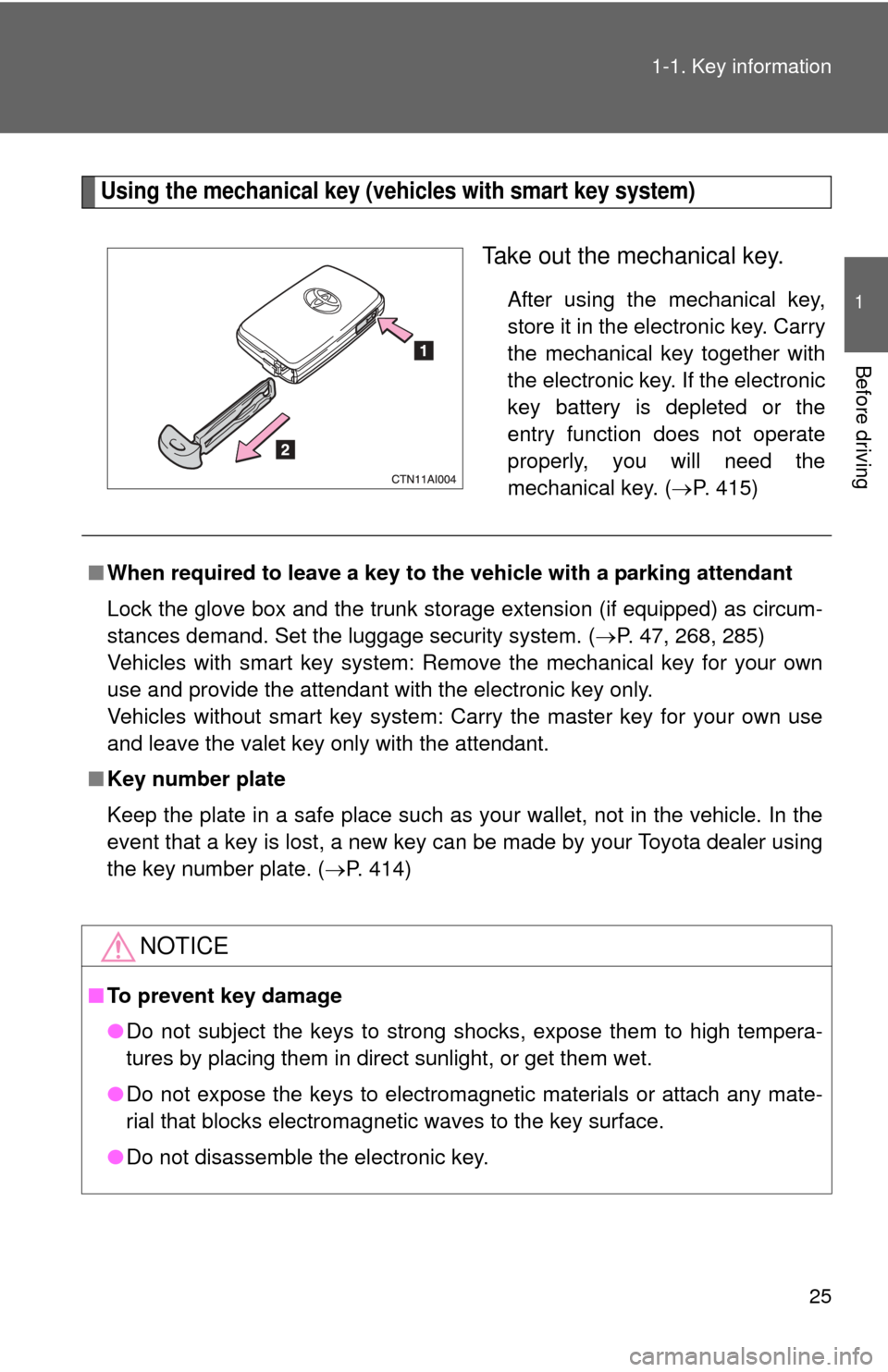2008 TOYOTA CAMRY battery
[x] Cancel search: batteryPage 4 of 476

TABLE OF CONTENTSIndex
4
3-5. Using the storage features ........................... 267
List of storage features....... 267
• Glove box ......................... 268
• Console box ..................... 268
• Cup holders ...................... 270
• Auxiliary boxes ................. 272
3-6. Other interior features ..... 275 Sun visors .......................... 275
Vanity mirrors ..................... 276
Clock .................................. 277
Ashtrays ............................. 278
Power outlet ....................... 279
Seat heaters ....................... 281
Armrest............................... 283
Rear sunshade ................... 284
Trunk storage extension (vehicles with reclining
rear seat) .......................... 285
Floor mat ............................ 286
Trunk features .................... 287
Garage door opener ........... 288
Compass ............................ 293 4-1. Maintenance and care ...... 298
Cleaning and protecting the vehicle exterior ........... 298
Cleaning and protecting the vehicle interior ............ 300
4-2. Maintenance ...................... 303 Maintenance requirements .................... 303
General maintenance ......... 305
Emission inspection and maintenance (I/M)
programs .......................... 308
4-3. Do-it-yourself maintenance ................... 309
Do-it-yourself service precautions ....................... 309
Hood ................................... 313
Positioning the jack............. 314
Engine compartment .......... 316
Tires.................................... 334
Tire inflation pressure ......... 344
Wheels................................ 348
Air conditioning filter ........... 350
Key battery ......................... 353
Checking and replacing fuses ................................. 357
Light bulbs .......................... 368
4Maintenance and care
Page 5 of 476

1
2
3
4
5
6
7
5
5-1. Essential information ....... 374If your vehicle needs to be towed ........................... 374
If you think something is wrong ............................ 377
Fuel pump shut off system .............................. 378
Event data recorder ............ 379
5-2. Steps to take in an emergency ....................... 381
If a warning light turns on or a warning buzzer
sounds... ......................... 381
If a warning message is displayed (vehicles with
multi-information
display) ............................. 391
If you have a flat tire............ 400
If the engine will not start .... 411
If the shift lever cannot be shifted from P (automatic
transmission) .................... 413
If you lose your keys ........... 414
If the electronic key does not operate properly
(vehicles with smart key
system) ............................. 415
If the battery is discharged ........................ 417
If your vehicle overheats ..... 421
If the vehicle becomes stuck ................................. 424 6-1. Specifications ................... 428
Maintenance data (fuel, oil level, etc.) ........... 428
Fuel information.................. 439
Tire information .................. 442
6-2. Customization................... 454 Customizable features........ 454
6-3. Initialization....................... 458 Items to initialize ................. 458
Reporting safety defects for U.S. owners ................ 460
Abbreviation list ........................ 462
Alphabetical index .................... 463
What to do if... ......................... 473
5When trouble arises6Vehicle specifications
7For U.S. owners
Index
Page 25 of 476

25
1-1. Key information
1
Before driving
Using the mechanical key (vehicles with smart key system)
Take out the mechanical key.
After using the mechanical key,
store it in the electronic key. Carry
the mechanical key together with
the electronic key. If the electronic
key battery is depleted or the
entry function does not operate
properly, you will need the
mechanical key. (
P. 415)
■When required to leave a key to th e vehicle with a parking attendant
Lock the glove box and the trunk storage extension (if equipped) as circum-
stances demand. Set the luggage security system. (P. 47, 268, 285)
Vehicles with smart key system: Remove the mechanical key for your own
use and provide the attendant with the electronic key only.
Vehicles without smart key system: Carry the master key for your own use
and leave the valet key only with the attendant.
■ Key number plate
Keep the plate in a safe place such as your wallet, not in the vehicle. In the
event that a key is lost, a new key can be made by your Toyota dealer using
the key number plate. ( P. 414)
NOTICE
■To prevent key damage
●Do not subject the keys to strong shocks, expose them to high tempera-
tures by placing them in direct sunlight, or get them wet.
● Do not expose the keys to electromagnetic materials or attach any mate-
rial that blocks electromagnetic waves to the key surface.
● Do not disassemble the electronic key.
Page 30 of 476

30 1-2. Opening, closing and locking the doors and trunk
■Operation signals
A buzzer sounds and the emergency flashers flash to indicate that the doors
have been locked/unlocked. (Locked: Once; Unlocked: Twice)
■ Conditions affecting operation
The smart key system uses weak radio waves. In the following situations,
the communication between the electronic key and the vehicle may be
affected, preventing the smart key system and wireless remote control from
operating properly. (Ways of coping: P. 415)
● When the electronic key battery is depleted
● Near a TV tower, electric power plant, gas station, radio station, large dis-
play, airport or other facility that generates strong radio waves or electri-
cal noise
● When carrying a portable radio, ce llular phone, cordless phone or other
wireless communication devices
● When the electronic key has come into contact with, or is covered by, a
metallic object
● When multiple electronic keys are in the vicinity
● When carrying or using the electronic key together with the following
devices that emit radio waves
• Another vehicle’s electronic key
• A wireless key that emits radio waves
• Personal computer
● If window tint with a metallic content or metallic objects are attached to
the rear window
Page 32 of 476

32 1-2. Opening, closing and locking the doors and trunk
■Battery-saving function
In the following circumstances, the entry function is disabled in order to pre-
vent the vehicle and electronic key batteries from discharging.
●When the entry function has not been used for 2 weeks or more
● When the electronic key has been left within approximately 7 ft. (2 m) of
the vehicle for 10 minutes or more
The system will resume operation when...
● The vehicle is locked using the door handle lock switch.
● The vehicle is locked/unlocked using the wireless remote control func-
tion. ( P. 3 7 )
● The vehicle is locked/unlocked using the mechanical key. ( P. 415)
■ Electronic key battery depletion
●The standard battery life is 1 to 2 years. (The battery becomes depleted
even if the electronic key is not used.) If the smart key system or the
wireless remote control function does not operate, or the detection area
becomes smaller, the battery may be depleted. Replace the battery when
necessary. ( P. 353)
● To avoid serious deterioration, do not leave the electronic key within 3 ft.
(1 m) of the following electrical appliances.
•TVs
• Personal computers
• Recharging cellular phones or cordless phones
• Table lamps
■ To operate the system properly
Make sure to carry the electronic key when operating the system. Do not get
the electronic key too close to the vehicle when operating the system from
the outside of the vehicle.
Depending on the position and holding condition of the electronic key, the
key may not be detected correctly and the system may not operate properly.
(The alarm may go off accidentally, or the door lock prevention may not func-
tion.)
Page 35 of 476

35
1-2. Opening, closing and locking the doors and trunk
1
Before driving
■
If the smart key system does not operate properly
● Locking and unlocking the doors and trunk: Use the mechanical key.
( P. 415)
● Starting the engine: P. 416
■ When the electronic key battery is fully depleted
P. 353
■ Customization that can be co nfigured at Toyota dealer
It is possible to deactivate the smart key system, etc.
(Customizable features P. 454)
■ Certification for the smart key system
For vehicles sold in the U.S.A.
NOTE:
This device complies with Part 15 of the FCC Rules. Operation is subject to
the following two conditions: (1) This device may not cause harmful interfer-
ence, and (2) this device must accept any interference received, including
interference that may cause undesired operation.
NOTICE:
This equipment has been tested and found to comply with the limits for a
Class B digital device, pursuant to Part 15 of the FCC Rules. These limits
are designed to provide reasonable protection against harmful interference
in a residential installation. This equipment generates, uses and can radiate
radio frequency energy and, if not installed and used in accordance with the
instructions, may cause harmful interference to radio communications. How-
ever, there is no guarantee that interference will not occur in a particular
installation. If this equipment does cause harmful interference to radio or
television reception, which can be determined by turning the equipment off
and on, the user is encouraged to try to correct the interference by one or
more of the following measures:
FCC ID: NI4TMLF-3
Page 38 of 476

38 1-2. Opening, closing and locking the doors and trunk
■Door lock buzzer
If a door is not fully closed, a buzzer sounds continuously for 10 seconds if
an attempt to lock the door is made. Fully close the door to stop the buzzer,
and lock the vehicle once more.
■ Panic mode
Vehicles with smart key system
Vehicles without smart key system
■Key battery depletion
Vehicles with smart key system
P. 3 2 Vehicles without smart key system
The standard battery life is 1 to 2 years. (The battery becomes depleted
even if the key is not used.) If the wireless remote control function does not
operate, the battery may be depleted. Replace the battery when necessary.
( P. 353)
When is pressed for longer
than about one second, an alarm will
sound intermittently and the vehicle
lights will flash to deter any person from
trying to break into or damage your
vehicle.
To stop the alarm, press any button on
the electronic key.
When is pressed for longer
than about one second, an alarm will
sound intermittently and the vehicle
lights will flash to deter any person from
trying to break into or damage your
vehicle.
To stop the alarm, press any button on
the wireless remote control.
Page 39 of 476

39
1-2. Opening, closing and locking the doors and trunk
1
Before driving
■
Security feature
If a door is not opened within approximately 60 seconds after the vehicle is
unlocked, the security feature automatically locks the vehicle again.
■ When the electronic key battery is fully depleted (vehicles with smart
key system)
P. 353
■ Conditions affecting operation
Vehicles with smart key system
P. 3 0 Vehicles without smart key system
The wireless remote control function may not operate normally in the follow-
ing situations.
● Near a TV tower, radio station, electr ic power plant, airport or other facil-
ity that generates strong radio waves
● When carrying a portable radio, cell ular phone or other wireless commu-
nication devices
● When multiple wireless keys are in the vicinity
● When the wireless key has come into contact with, or is covered by, a
metallic object
● When a wireless key (that emits radio waves) is being used nearby
● When the wireless key has been left near an electrical appliance such as
a personal computer